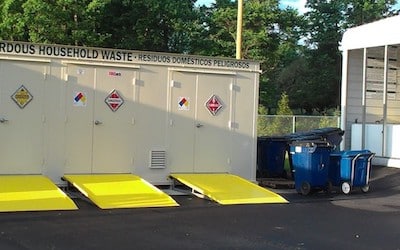How to Safely Segregate and Store Household Hazardous Waste

Municipal waste collection services and landfill sites have restrictions on acceptable waste. But, household owners use hazardous materials as part of their normal daily lives. Landfills
won’t accept products like paints, cleaners, oils, batteries and pesticides. Most hazardous products feature clear warning labels such as CAUTION, FLAMMABLE, TOXIC, etc.
Educating communities about reducing their use of hazardous products is critical. Municipalities are also under pressure to offer household hazardous waste (HHW) services. It is important for the community to remove used, discarded or leftover hazardous products from their homes. When not removed, they have the potential to cause injury or become a source of pollution.
Proper Household Hazardous Waste Disposal
The Environmental Protection Agency defines the requirements and exclusions for household hazardous waste.EPA considers some leftover household products that can catch fire, react, or explode under certain circumstances, or that are corrosive or toxic as household hazardous waste. Products, such as paints, cleaners, oils, batteries, and pesticides can contain hazardous ingredients and require special care when you dispose of them.It aims to protect the environment from the harmful effects of pollution, such as groundwater contamination. These laws also protect workers from exposure to dangerous chemicals. When incompatible chemicals mix, there is the potential for explosion and fire. Proper household hazardous waste disposal helps prevent such risks. Municipalities have a major role to play in protecting communities from the harmful effects of HHW. But, to do this, they must segregate hazardous waste and store it safely.
